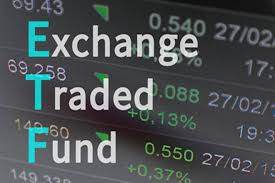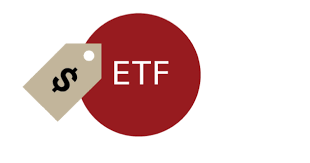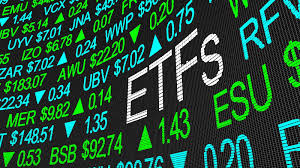Bonds vs. Bond ETFs
Bonds can provide safe, stable and predictable returns.

Bonds vs. Bond ETFs
Bonds can provide safe, stable and predictable returns. It has a very low correlation to stock returns, making it suitable for portfolio formation with high-risk stocks. For the average investor, however, investing in a single bond is virtually impossible.
Difficulties in purchasing bonds
It is very difficult for small and medium-sized investors to invest in a single bond, for several reasons.
Low market transparency. Bonds are mostly traded in the over-the-counter (OTC) market, so there is no uniform trading price, and investors will find that different brokers are interested in the same The quotes for the bonds can vary widely.
The price tag is high. Brokers will add a mark-up to the bond price when dealing with investors, especially small and medium-sized investors. A U.S. government study shows that brokers can mark up municipal bonds by as much as 2.5 percent. Broker markups, bid-ask spreads and the price of the bond itself result in a very high cost of investing in a single bond.
Poor liquidity. The liquidity of different bonds varies considerably: some bonds are traded daily when the market is functioning well, others are traded weekly, and still others are traded weekly. Some bonds are traded only once every few months; and during periods of market downturn, some bonds even stop trading altogether.
What is a bond ETF?
A bond ETF is a packaged investment vehicle for bonds. Bond ETFs track bond indices and attempt to replicate their yields. While bond ETFs contain only bonds, they are traded on exchanges like stocks and have some of the characteristics of equity securities.
The Difference Between Bonds and Bond ETFs
Although bond ETFs consist of bonds, the tradability of bond ETFs gives them several characteristics.
The bond ETFs will not mature. A general bond has a fixed, constant maturity date, on which the investor receives the principal. However, the maturity of a bond ETF is a weighted average of the maturities of all the bonds in its portfolio. At any point in time, a portion of the underlying bonds may have matured or be outside the bond ETF's target maturity range. As a result, the issuer will keep buying and selling bonds to keep the maturity of the bond ETF constant.
Bond ETFs have a relatively high level of liquidity. Even in less liquid markets, bond ETFs have some liquidity. The frequency of trading varies greatly from bond to bond, with some trading daily and others once a month. And some bonds may even stop trading when the bond market is depressed. In contrast, bond ETFs are traded on an exchange, which means they can be bought and sold at any time during trading hours, even if their underlying bond In itself there was no deal at the time. One study suggests that high-yield corporate bonds are typically traded less than half the time each month, and some high-yield corporate bonds ETFs can trade millions of dollars a day in share.
The bond ETF generates monthly income. One of the biggest benefits of bonds is that they will pay regular interest to investors. Normally, interest on bonds is paid semi-annually. However, bond ETFs, by virtue of holding a basket of bonds, will have bonds in the portfolio paying interest at any point in time. As a result, bond ETFs typically pay interest monthly, rather than semi-annually, although the amount of interest paid may vary from month to month.
Advantages of Bond ETFs
Advantages of bond ETFs over regular bonds.
Diversification of investments. By purchasing bond ETFs, investors own hundreds to thousands of bonds at once for significantly less than the cost of investing in a single bond. Bond ETFs are diversified investments at retail prices.
Transaction convenience. Eliminate the complicated process of trading bonds within the OTC market and trade bond ETFs with a single mouse click.
Liquidity. The liquidity of different bonds varies widely. And bond ETFs are tradable during trading hours.
Price transparency. The price of the bond ETF is updated every 15 seconds. The bonds are trading at a higher price uncertainty.
More frequent regular income. Bonds pay interest semi-annually, while bond ETFs pay monthly. Although bond ETFs pay different interest rates each month, investors can still reinvest this asset.
Bond ETFs on the Short Side
Bond ETFs have two main shortcomings.
Uncertainty about the return of principal. Bond ETFs don't mature, and they don't guarantee the return of Japanese gold at maturity like regular bonds do.
However, some ETF providers have begun issuing bond ETFs with maturity dates. these products put the maturing bonds included in the ETFs The principal of the bond is retained and returned at maturity in a uniform manner across all bonds, and there are a number of such products available internationally.
If interest rates rise, investors will suffer losses. Changes in interest rates can have a significant impact on bond values. Ordinary bond investors can reduce their losses from rising interest rates by holding their bonds to maturity. And bond ETFs have no maturity date, so there aren't many ways to deal with losses from rising interest rates.
Choosing Bonds or Bond ETFs
For the average investor, buying bonds is impractical. Even if investors have sufficient financial and bargaining power, bonds do not have the diversification, high liquidity, and transparency of bond ETFs It has the advantages of being a good, reliable, and easy-to-trade system, and earning monthly interest. Although bond ETFs have some of the risks mentioned above, they are still a better bond investment for the average investor. way.









